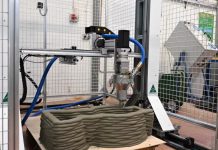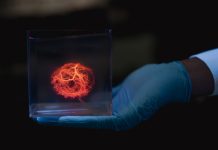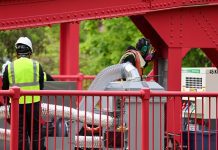
South Australia is investing $1.4 million in a new state-of-the-art metal 3D printing facility to be based in Northern Adelaide.
The grant will be provided to the University of Adelaide to establish the Additive Manufacturing Applied Research Network, which will create jobs and provide access for local companies to manufacture parts for the growing defence and medical device sectors.
Lauded as the Southern Hemisphere’s most advanced metal 3D printing facility, it will house three printers – one of which will be solely used and accredited for medical device manufacturing.
The facility will be the only metal 3D printing centre in Australia that’s available to companies on a commercial basis, with a number of local businesses already showing interest to gain access to its world-leading technology.
The network will also involve the establishment of a plastics 3D printing facility at the City of Playford’s Stretton Centre, Munno Para.
In making the announcement, Manufacturing and Innovation Minister Kyam Maher said the University of Adelaide’s Institute for Photonics and Advanced Sensing and Optofab Australian National Fabrication Facility, together with the Stretton Centre in northern Adelaide and CSIRO’s Lab 22 additive manufacturing centre will establish the applied research network as a state-of-the-art, metal additive manufacturing facility.
He said the new facility will remove significant cost pressures and barriers for local manufacturers and provide them with a new tool to undertake research, product development and validation testing.
“The success of transforming the South Australian economy depends on our ability to adapt to new ways of doing things and establish advanced technologies to build globally competitive, high-value firms,” Mr Maher said.
“Having the University of Adelaide support innovation in industries such as defence and health allows for better collaboration and fresh thinking and really helps promote our state as a world-leader in advanced and additive manufacturing.”
The University of Adelaide Acting Deputy Vice-Chancellor (Research), Professor Julie Owens, said the new facility puts Adelaide at the forefront of additive manufacturing.
“This facility has been born out of three years’ work by the University’s Institute for Photonics and Advanced Sensing and the Optofab Australian National Fabrication Facility. Clients who use our current small 3D metal printing facility have had to go overseas to get access to larger printers for manufacture of products,” Professor Owens said.
“The new facility will enable many advanced manufacturing projects in defence, medical devices, dental prostheses and injection moulding to be undertaken in Adelaide. This will significantly enhance local advanced manufacturing and we are proud to have been centrally involved in the creation of such an important new facility for South Australia.”
The facility is being supported through the Innovative Manufacturing Cooperative Research Centre, which assists manufacturers to transition from low cost manufacturing to advanced manufacturing based on modern technologies and models.




















